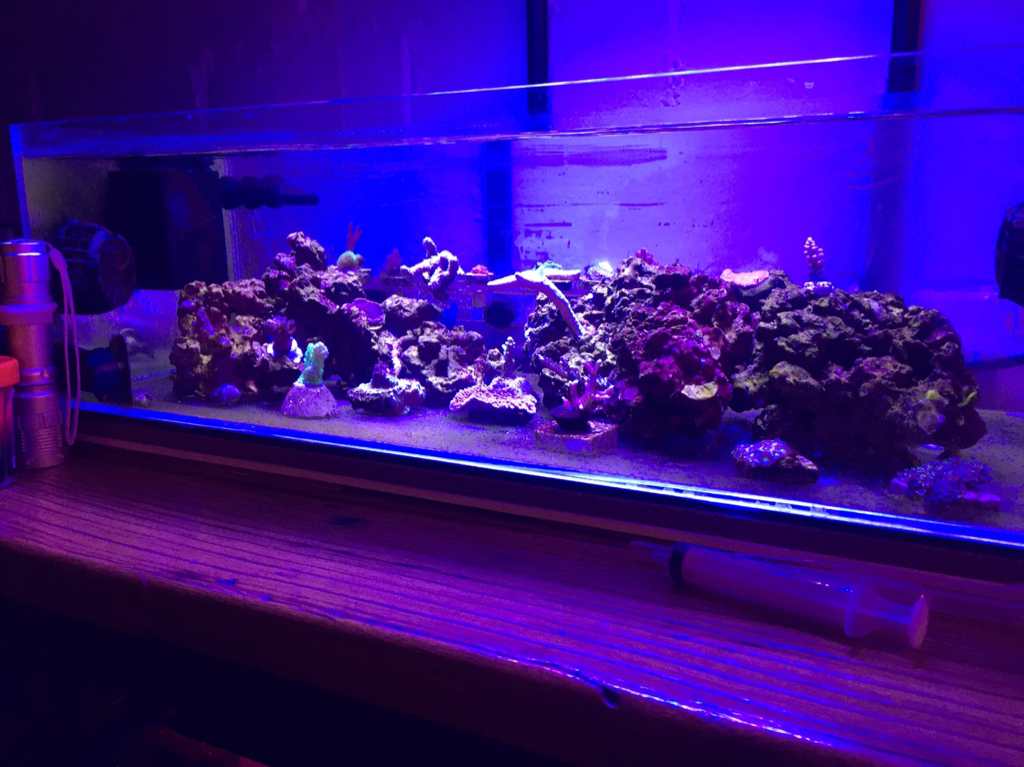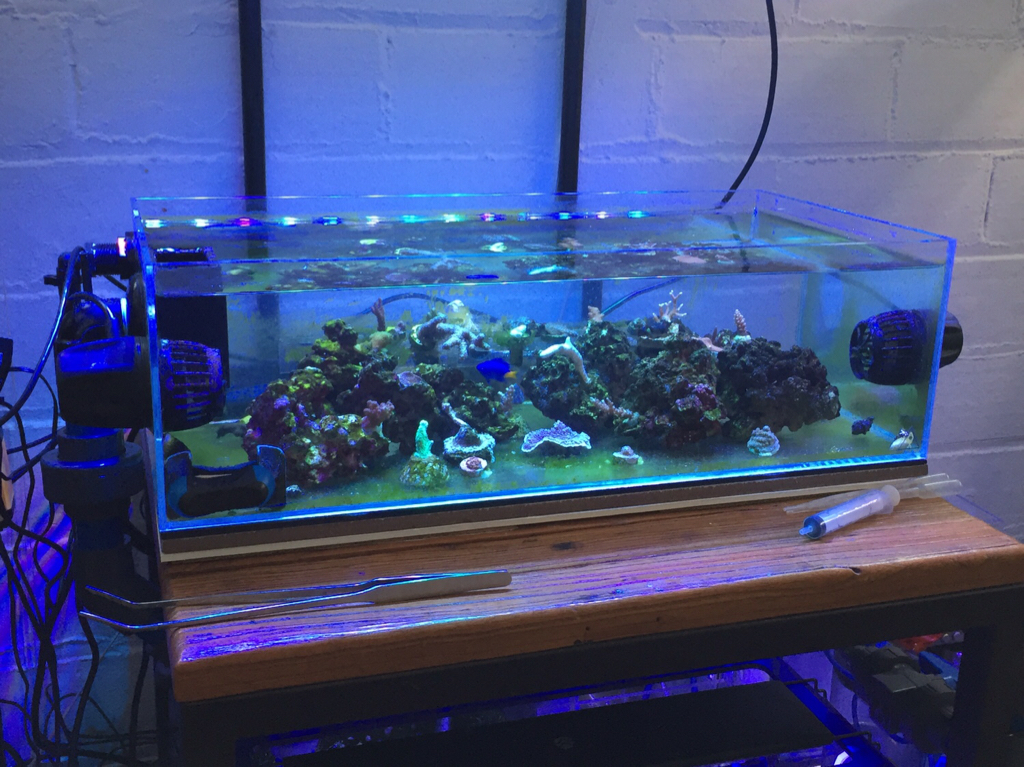There is no such thing as a *perfect* spectrum for corals, but I arrived at these numbers while working on a project. It includes UV-A as well as the normally considered violet-red wavelengths. Again, just for giggles, but its fairly close.

UV (350-399) 13.6%
Violet (400-430) 22.3%
Blue (431-480) 29.0%
Green-Blue (481-490) 4.6%
Blue-Green (491-510) 4.4%
Green (511-530) 7.5%
Yellow-Green (531-570) 5.0%
Yellow (571-580) 1.0%
Orange (581-600) 1.7%
Red (601-700) 10.8%
UV (350-399) 13.6%
Violet (400-430) 22.3%
Blue (431-480) 29.0%
Green-Blue (481-490) 4.6%
Blue-Green (491-510) 4.4%
Green (511-530) 7.5%
Yellow-Green (531-570) 5.0%
Yellow (571-580) 1.0%
Orange (581-600) 1.7%
Red (601-700) 10.8%





















